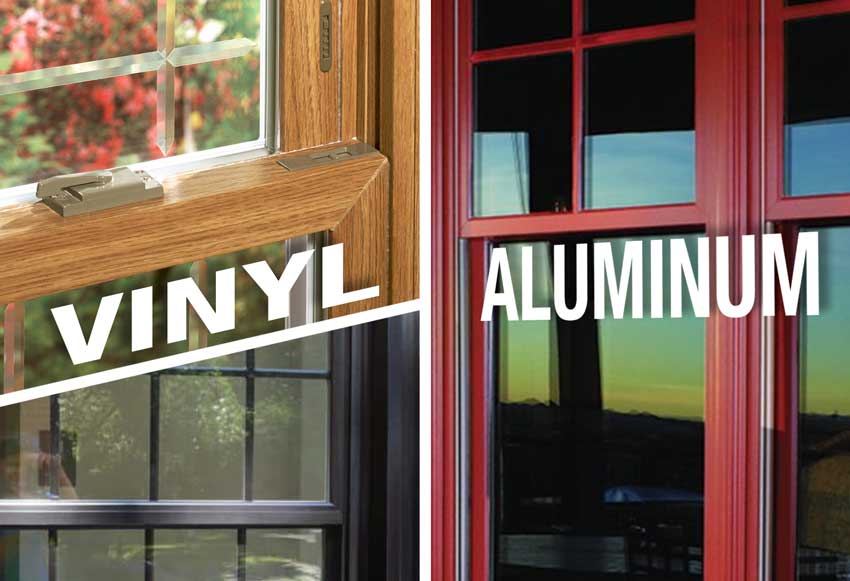With all the talk about green energy and rebates, a lot of people have looked to the possibility of replacing their old windows. You can save on energy costs while simultaneously improving the look of your home. Many windows provide little more than a 1/16-inch piece of low insulation glass between you and some pretty hot or cold weather. In hot climates like you have here in Florida, choosing the right window type can save you serious money. But what’s the difference between aluminum vs vinyl windows?
In the past, building codes lacked many of the provisions now in place for energy efficiency. That allowed for substandard windows to make their rounds in many cities. In fact, the 1950s were fraught with door-to-door salesman replacing those old “leaky” windows with “newfangled crank windows”. Today, these new crank windows provide very little insulating, and most of the ones I’ve seen lack any seals.
With rising energy costs, choosing the right window type is becoming an even more important means of home improvement. Plus, it tends to add curb appeal!
Table of Contents
Aluminum vs Vinyl Windows Material Differences
When comparing aluminum vs vinyl windows we end up looking at several factors. These include weight, material, color & texture options, and more. Let’s go through each in order to help you understand the differences between these two primary materials when replacing windows in your home.
Aluminum Windows are Painted – Vinyl Comes in Colors
Most people may not realize that aluminum windows include a coat of paint. No matter if you buy white, black, brown, or somewhere in-between, you can scratch an aluminum window. When you do, it reveals the aluminum underneath.
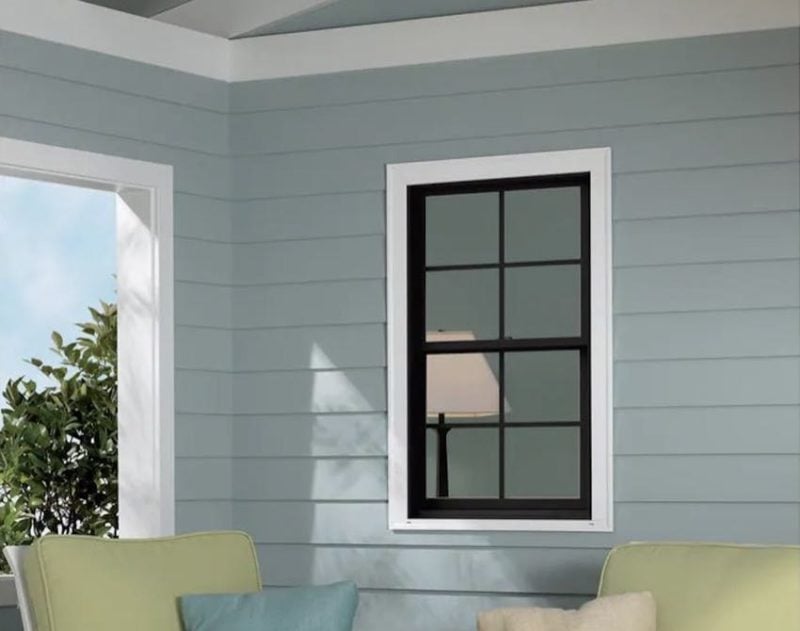
All things considered, your windows should go in without a hitch. In reality, dings and scratches happen more than you might like. Run something up against the aluminum divider in a large multi-pane window, and you might have to do some touch-up. In the aluminum vs vinyl windows debate, vinyl really shines here.
Vinyl windows come in preset colors. While you can paint them, you typically just get the color you want so you avoid that hassle.
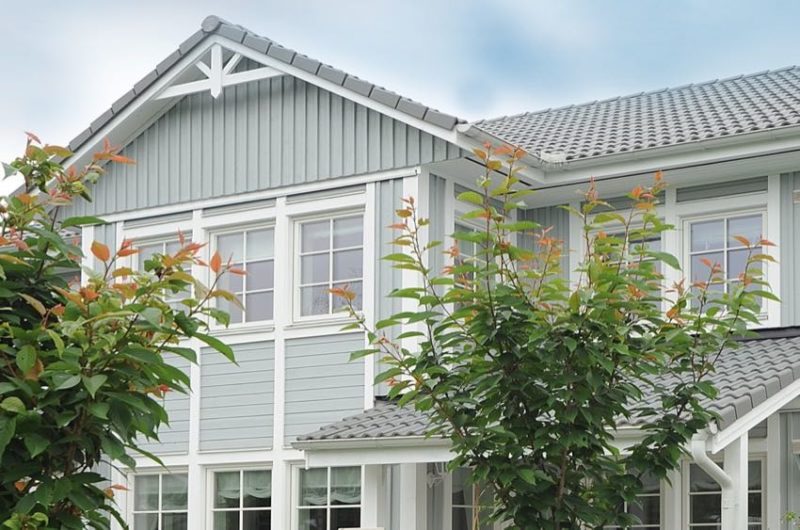
Vinyl Windows Can Include a Wood-Like Texture
You can order vinyl windows smooth or with a wood-like texture. This helps you achieve the look of wood when you want it. You may come across something called “vinyl woodgrain”. That represents a vinyl window that has the look of real wood.
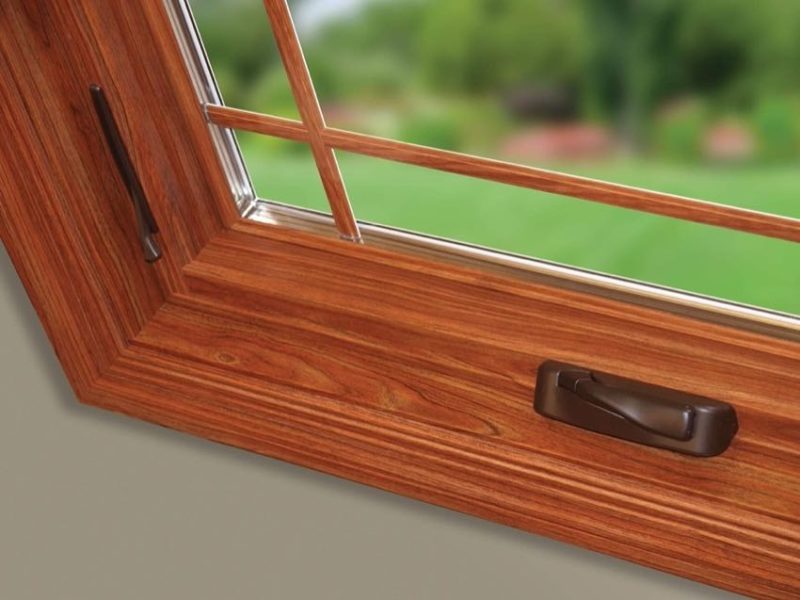
Vinyl woodgrain windows come in many colors and styles, including light, medium, and dark oaks—even cherry.
Vinyl Windows Weigh More Than Aluminum
This little tidbit may not matter much to you, but vinyl windows actually weigh more than aluminum windows. You’d think a metal window would weigh more than plastic. In truth, you typically get a lot more material and thickness around the perimeter of an otherwise identical aluminum window. If weight—for whatever reason—matters to you, then this might help you in your decision-making process.
Choosing the Right Window Type
There are, more or less, five different types of window frame material out there to choose from. It’s important to understand the positives and negatives of each when choosing the right window type for your home. This won’t be a complete breakdown of all the differences in windows. However, we thought we’d start with one of the more overarching choices.
The window frame is an important aspect. Here are some things we think that all homeowners should know about the frame types before choosing the right window type for their home.
Wood Windows
If your interest is in solid wood, you’re in luck. Wood is a superb, natural insulator against heat and cold. Wood windows do, however, require a certain level of maintenance. This includes painting and staining—a task that may eventually lead to scraping and re-painting or staining. Because wood windows are natural, they are going to have to withstand the rain, snow, heat, and other elements that tend to cause swelling, contraction, and decay.
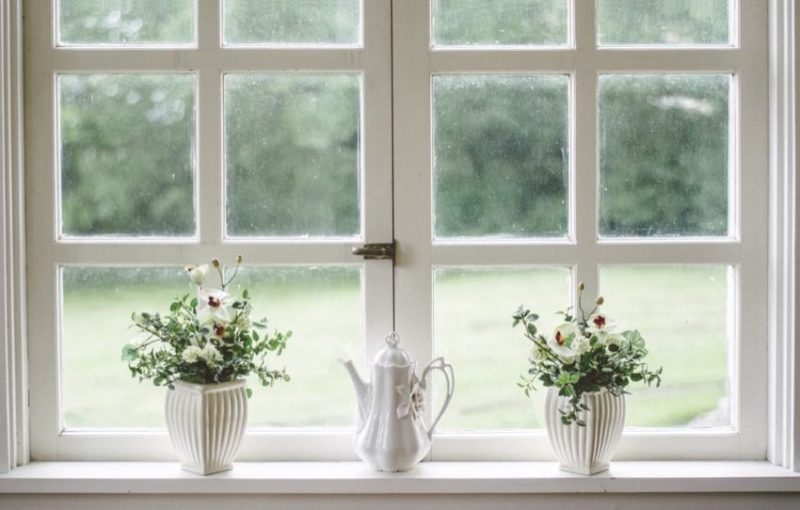
Aluminum Windows
If you are looking for the cheapest option, you found it. Aluminum windows give you a strong and affordable solution that doesn’t require any maintenance. But remember, aluminum is metal, so it’s going to conduct heat and cold through from the outside into your home. This may not be a huge deal, but it’s a consideration. Aluminum windows are also, typically, less stylized than other windows. They may not work as well for older homes attempting to retain that old-world charm. Typically, if you plan on painting the window itself a specific color to match your home, you’ll want to go with aluminum over vinyl as it’s easier to paint and prime.
Vinyl Windows
Vinyl windows are nearly as affordable as aluminum and share their maintenance-free characteristics.
It is possible for vinyl windows to fade and even sag over time. We’ve found this to be less and less of an issue. The other nice thing about vinyl is that it comes in an array of colors right off the bat. This includes white, cream, and brown—making it easier to purchase a paint-free solution to match your home. Whenever possible, we tend to go with vinyl over aluminum. Vinyl conducts less heat and is generally easier to work with (you can trim flanges if needed with a razor knife, for example).
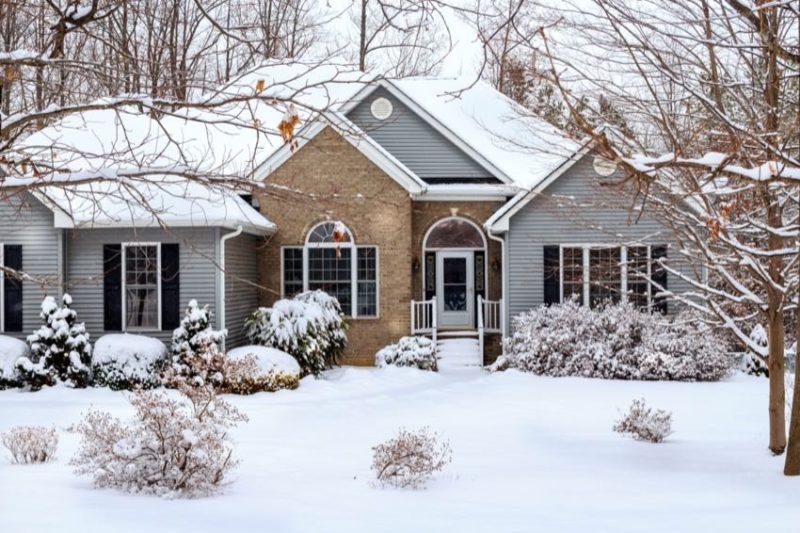
Clad Windows
Clad windows are like the superstars of the window world. They are literally vinyl or sometimes aluminum laid overtop of a wood window – typically on the outside only. This type of window is the most expensive but it really combines the best of everything. You get a nice wood frame inside that can be painted or stained to match the desired look for your home’s interior, and you get the protection of vinyl or aluminum against the outside elements. Wood frame windows also help reduce the transfer of cold and heat from the outside into your home. Since it’s really like two windows in one, you can see why vinyl-clad or aluminum-clad windows cost more than almost any other type of window.
Composite Windows
Composite windows are the new kid on the block, so to speak. These frames actually provide superior resistance against air infiltration, in addition to thermal resistance (through the frame) comparable to wood. They are a stronger and more durable window replacement option than many others, but they still cost considerably more than either aluminum or vinyl. One of the added benefits is you get a solution that can have the look and feel of wood but be completely protected against the elements.
Final Thoughts on Aluminum vs Vinyl Windows
If you’re going to hang onto your house for an extended period of time, you might want to investigate new windows. Compare not only aluminum vs vinyl windows but also what they might cost you compared to the potential energy savings. We also love the aesthetic improvements new windows provide. If you can do the work yourself, you’ll find that even a custom-size vinyl window can be as inexpensive as $100 or less at your local home improvement warehouse. Choosing the right window type isn’t all that hard if you do the math and understand the differences of each style and form.
Let us know if you’ve replaced your windows and if you’re a builder or remodeler, which style you tend to work with the most.

